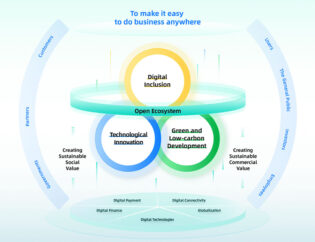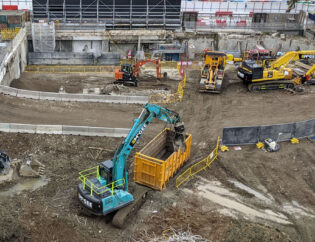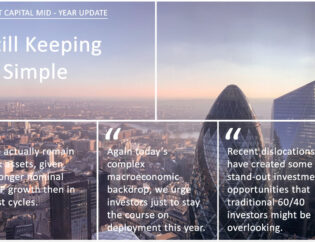
How to Think about Private Infrastructure as Inflation Finds its Resting Point.
INFLATION AT HIGHEST LEVELS
“As inflation has risen to the highest sustained levels in over 30 years, real assets, which are tied to physical structures, have received renewed focus as inflation hedges. Our Global Macro, Balance Sheet & Risk team has consistently pointed out that bonds and stocks are now moving increasingly in tandem, as markets adapt to a world where stickier inflation means that global central banks have less leeway to respond to market disruptions with rate cuts.”
Infrastructure as an Inflation Hedge
First, it should be said that inflation may be slowing, but it has not gone away. In fact, our macro team believes it will likely persist above Bank of England targets for the foreseeable future, driven by important structural shifts related to demographics, supply chains, housing availability, fiscal deficits, and the energy transition.
Private infrastructure provides a few layers of protection against inflation and volatility. First, like all real assets, infrastructure has a tangible underlying asset. Physical assets typically retain their value or even appreciate during periods of high inflation. That’s particularly true of infrastructure because the assets supporting water to homes, power to stores and internet service for families are essential for any economy to operate and tend to have extremely high barriers to entry, often in the form of government regulation.
Infrastructure also has the potential to yield predictable cash flows, which may provide a hedge against market volatility. Infrastructure contracts tend to be long term, sometimes spanning decades, and frequently include built-in contractual protections against inflation. Public agencies typically consider inflation when regulated assets such as utilities ask for approval to raise rates, for example. Assets such as data centres, cell towers, and renewable power installations often have long-term contracts that include index-based toll adjustments.
However, not all infrastructure is created equal: the performance of some assets is linked closely with economic expansion. For example, the revenue airports, certain kinds of toll roads, and ports generate, for example, depends on volume and usage, which can vary depending on economic conditions or trade activity. Therefore, choosing investments that are not heavily dependent on GDP growth may make for more predictable returns through the economic cycle.
Many Opportunities for Diversification
Infrastructure has little correlation to stocks, bonds, or even real estate, another major category of real assets. Including infrastructure in a well-balanced, diversified portfolio — one that includes equity, fixed income, real estate and other assets — yields diversification benefits.
It’s also possible to diversify within infrastructure, which includes sectors such as utilities, transportation, energy, digital infrastructure, and more to better capture regional consumer and demographic trends.
In the digital realm, increasing global data usage and demand for connectivity is driving growth in fiber optic networks, cell towers, and data centres. Across the UK., data centre leasing activity and rental growth have been robust and wider adoption of artificial intelligence, cloud-based computing networks and other trends are further driving demand for digital infrastructure.
The transition from fossil fuels to renewable energy creates a host of possibilities, including electric vehicle infrastructure, renewable energy generation, and battery storage technology. Geopolitical rivalries and the regionalization of supply chains could further elevate the importance of infrastructure, with subsectors such as energy, water, communications and data at the forefront of those trends.
Within these potential growth sectors, there are private infrastructure assets that sit along the risk spectrum. Within renewable energy, for example, there is a major difference between investing in mature installations and greenfield projects. We think the best risk-return across all opportunities comes from choosing investments in a way that aims to limit the potential downside, including choosing assets with the strong market position, difficult-to-replace assets, and predictable cash flows we discussed earlier.
Steady Equity
As mentioned, not all private infrastructure is created equal. Particularly for investors attracted to infrastructure for its relative predictability, we think a sharp focus on risk is critical. Because infrastructure assets tend to be heavily regulated and monitored, political risk is important to understand. Infrastructure isn’t immune to disruption, either. The composition of the energy industry and its likely path forward look very different now than they did a decade or two ago, for example.
Yet, while we think private infrastructure can offer long-term oriented investors relatively stable and resilient returns during times of high, low or plateauing inflation, private infrastructure is an equity investment that uses an equity toolkit. We believe that optimizing operations, strategic acquisitions, and other private equity value-creation techniques — as well as the potential to invest behind long-term economic growth drivers — creates potential for appreciation above inflation in all market conditions.











